The coastal city of Lisbon is the Portuguese capital. With its long history, it is also among the country’s most popular destinations and of course world famous food in Lisbon.
Many explorers have set sail from the city of Lisbon to find and colonize new lands, and these influences were then returned to the city too.
There are plenty of places to explore in Lisbon, with the Belém tower and the São Jorge castle among its most famous landmarks.
As with any new city, the best way to explore it is with food.
Whenever I land in a city I like to spend the day on a food tour.
Not only is it a great food guide to the city but often you find lots of great travel tips and you can try more local food than maybe you would on your own.
There’s a lot of delicious things to taste in Lisbon so you’re going to need help.
From hearty stews and great fish dishes to the city’s famous sandwiches, there are plenty dishes worth trying here.

Influences on Lisbon Cuisine
The food in Lisbon has many influences, and many of these come from its history as a great trading city.
This led to Lisbon seeing a huge variety of herbs and spices that were imported from around the world.
As these flavours became more popular, local producers would then start to grow such herbs and spices as well.
Along with this long trading history, Lisbon’s location also has an important role in the growth of the city’s Portuguese cuisine.
Its proximity to the ocean means that fish plays an important role in the city’s food.
Brazilian Cuisine
However, due to the city’s size, meat and vegetables are also supplied from the productive farmland just a short distance away.
All of these find their way into the varied and tasty dishes to be found in Lisbon today.
Must Have Food in Lisbon Portugal
Here are some of the most popular traditional dishes worth trying in Lisbon:
Bacalhau à Brás
There are few ingredients that are more Portuguese than salt cod. Not surprisingly, this is one of the quintessential dishes of Lisbon.
As a port city, the fleets of Lisbon traditionally caught a significant amount of cod. The process of salting the fish helped it to last much longer. But it also gives the fish a distinctive taste.
In this Lisbon dish the salt cod is fried with thinly sliced sticks of potato and onions. The cod is the last ingredient added to the pan. It soaks up the oil in the pan, before beaten eggs are added to the mix.
This is no easy dish to cook. As the dish must cook before the eggs come together as an omelette or as scrambled eggs.
The dish is finally served and topped with black olives, and a few sprigs of parsley.
While Bacalhau à Brás is said to originate in the Bairro Alto district of the city, it is now found across many coastal areas of Portugal.
The ‘à Brás’ style is said to be the name of the dish’s creator, and can sometimes be used to prepare other dishes too.
Alheira
While not a dish, alheira is one of the ingredients that is found in a number of different Portuguese food in Lisbon.
It is a sausage have been produced and cured in Portugal for centuries. However, unlike other varieties of sausage, alheira is made from game that is fleshed out with fat and breadcrumbs.
Usually served with a side dish such as french fries, or as an ingredient in a greater dish, alheira is found in many areas throughout Lisbon.
The reason that this sausage is such an important part of the city’s cuisine is found in the annals of Lisbon’s history. In the early sixteenth century, the city saw an influx of Jewish immigrants after the growth of the Inquisition in Spain.
They wanted to hide their identity but could not eat traditional Portuguese sausage. Instead they made pork with game to hang in windows and eat amongst locals.
The game stuffed sausages are considered to have saved much of the Jewish community in Lisbon.
Iscas Com Elas
Like many European countries, Portugal has long ensured that it isn’t just the best cuts of meat that are used. The whole animal must be used, nothing is wasted.
Iscas com elas uses either a pork for calf liver. While the flavour of liver may not be to everyone’s taste, this dish makes good use of a marinade to help with the strong liver flavour.
The marinade is generally made with vinegar, white wine and garlic. The liver is the finely sliced and left to marinate for at least four hours, but preferably overnight.
The liver is gently fried for a few minutes, with the marinade added to the pan as a sauce. This is then served on a bed of sliced potatoes and garnished with parsley.
Carne de Porco Alentejana
This Portuguese dish makes great use of both the fresh seafood and the agricultural produce found in the area surrounding Lisbon.
The key ingredients are pork and clams, which are supplemented with vegetables and herbs.
To prepare the dish, pork marinated in white wine, coriander, garlic and paprika.
It is flash fried and clams are added to the pan for another quick fry. It is most commonly served with with diced fried potatoes and other vegetables.
Carne de Porco Alentejana is named after the region of Alentejo, to the south of Lisbon, but is now to be found in many restaurants in the city.
Polvo à Lagareiro
Much like snails, octopus is another ingredient that many people will find intimidating and may even avoid.
However, for the people of Lisbon, octopus is a common ingredient that is found in many dishes.
Polvo à lagareiro is traditionally a dish to celebrate the return of the fishermen to port.
It doesn’t hide the main ingredient with pungent flavours. Instead it keeps the preparation simple.
To ensure it is tender, the octopus is twice cooked in this recipe. It is firstly boiled in water to cook the flesh thoroughly. It is then grilled with chopped potatoes.
Although the dressing can vary depending on the restaurant or chef, it is generally a combination of olive oil, cilantro and garlic.
Caracois
Every culture has a dish or specialty that seems a little unusual to those who are visiting the region.
Mexico has its giant ants’ eggs, while in the Middle East barbecued scorpion is among the delicacies.
In Europe, snails are often farmed and eaten, although the immediate reaction shouldn’t put you off trying these little animals – because I love escargot!
Caracois are often served as an appetizer or afternoon snack in Lisbon. They are generally smaller snails than those prepared in France.
The classic way to prepare them is to cook them in water with herbs and spices, including garlic, onions and oregano, and sometimes with tomato as well.
They are usually served in their shells in a bowl, where you proceed to suck the small morsels from their shells.
Amêijoas à Bulhão Pato
This is another of the dishes that shines a light on the quality fresh seafood that is available in the waters near Lisbon.
Clams are one of the common ingredients to be found in the region, and they are at the heart of the dish.
The clams are prepared in a sauce combining olive oil and white wine, and then seasoned with garlic, cilantro, salt and pepper.
The clams are boiled in the sauce until all of the shells have opened, then drizzled with the sauce and a squeeze of lemon juice.
The dish is named after the poet, Bulhão Pato, who was a nineteenth century poet and raconteur, who even had his own cookery book.
Caldo Verde
One of the most traditional Portuguese food found throughout the country, as well as in Lisbon, is this vegetable soup.
Found on almost every menu in every restaurant, you will often see different varieties based on the green vegetables that are in season at the time.
It’s somewhat similar to pistou soup in Provence
Different chefs may also add some extra ingredients, such as sliced spicy sausage.
Provençal Pistou Recipe
The main ingredients are kale, collard greens and potatoes that have been roughly chopped or diced before cooking.
They boiled in a broth seasoned with garlic, onion and lemon juice, until the broth has a warm earthy flavour.
In some cases, the potato may be pureed before cooking to give a thicker broth.
Cozido á Portuguesa
Stews have been a vital part of almost every culture around the world.This version makes the best of the local ingredients.
Cozido á portuguesa generally includes some of the cheaper cuts of meat such as pig’s ears, trotters and blood sausage.
This stew is filled with meaty flavours and is slow cooked to allow the taste to permeate throughout.
Brazilian Shrimp Soup
Although recipes can vary depending on the season, the offal and blood sausage are supplemented with diced pork, beef and chouriço.
To finish the stew is topped with vegetables such as potatoes and cabbage along with beans and rice.
It is cooked for several hours to make for a powerful, tasty dish.
Arroz de Marisco
Simply translated as seafood rice, this food in Lisbon can look and taste differently in almost every restaurant you visit.
Rice has been a traditional Portuguese food for centuries. As Lisbon is famous for its seafood, this dish combines the best of Portugal for a thick and tasty stew.
Often cooked in one pot, the stew is made with medium grain rice and plenty of tomatoes. Chili and anchovies build the flavour in the the sauce.
The seafood included in the stew will often include local tiger prawns (shrimp), white fish and shellfish.
PEI Mussel Chowder
If using mussels, these are cooked separately before being added to the dish at the end. The finished stew is finally served with lemon and cilantro.
Queijo de Azeitão
Cheese is one of the key ingredients found throughout Mediterranean cuisine, and Portugal is no different.
This variety of Portuguese cheese is produced in the town of Setubal, a short distance to the south of Lisbon.
The distinctive flavour and unique preparation of the cheese earned it a spot in the Great Taste Awards’ list of the 50 best gastronomic products in the world.
It is made with sheep’s milk rather than the traditional cow’s milk, coming from the sheep of the Bordaleira breed.
At room temperature the cheese has a thick semi-solid consistency, while in restaurants it is often served as a starter.
Queijo de azeitão is eaten similar to a fondue, but it does not need to be heated to the same extent. This cheese has an acidic and spicy flavour, and is unlike most other cheeses you will have tasted.
Jaquinzinhos
Like many of the Portuguese snacks, these small fish are treats are delicious.
Jaquinzinhos are tiny fish, usually covered in a flour and egg mixture then deep fried briefly to give them a crunchy texture.
While sometimes served as part of a meal, they are most commonly served as an appetizer with sauces for dipping.
However, in some of the cafes in working class areas, these deep fried fish are served with rice and red beans or tomatoes.
Because they are very small fish, there is no need to worry about the bones. They are eaten whole, including the head and the tail.
Favas com Enchidos
This is another hearty and warming food in Lisbon that is perfect for the winter months in the city.
The base for this stew is made with broad beans, that are seasoned with mint and coriander before being slow cooked.
A variety of different meats are added depending on availability.
During the lean times this would be a combination of local pork and blood sausages that were sliced and added to the stew.
However, in most restaurants in Lisbon you will also find that there are chunks of belly pork and short ribs also included in the stew. It’s one of the best versions of pork and beans.
Torresmos
Another typical appetizer in Lisbon that was traditionally served with a glass of beer in are these tasty snacks are made with pork rinds.
They have a particularly strong porky flavour, and are quite similar to the pork scratchings found in many countries, including Ecuador.
Ecuadorian Food
However, the difference in Lisbon is that the torresmos generally aren’t cooked until they are crispy throughout.
These chunks of pork rind are usually cooked to be crispy on the outside, with small morsels of softer pork fat inside. The torresmos are then seasoned with salt to serve.
Street Food in Lisbon
Frango No Churrasco
One of the most common take out food in Lisbon is piri piri chicken, or specifically chicken grilled over hot coals.
There are usually several roasted chicken shops or churrascarias in most districts of Lisbon. Each one fiercely guarding the recipe of their piri piri sauce.
While some may have seats for eating in, most are takeout places that allow you take your chicken to go.
In the majority of places the roast chicken is butterflied and then placed in a marinade, usually including white wine, lemon juice and some of the piri piri peppers.
Frango no churrasco is then spit roasted or grilled over the coals, and basted in more marinade as it is cooked.
The result is a juicy and tasty meal, although be cautious with your application of the piri piri sauce, as some can be very hot!
Bifanas
Lisbon is not traditionally one of the European hotbeds of street food. But there are few better places in the world for meat sandwiches.
The bifana is probably the leader among the city’s meat sandwiches. It is eaten throughout the day.
Indeed, this humble sandwich is so popular in Lisbon that the local franchises of McDonald’s tried to get in on the action with the McBifana.
Sandwiches in the World
However, I’m not sure that’s the most traditional Lisbon food.
To make a bifana sandwich, pork is usually marinated in olive oil and piri piri sauce, while others marinated with herbs to offer a milder flavour.
It is gently cooked, sliced and placed in a crusty roll that absorbs all of the juices and oil from the meat.
But no sandwich is complete without finally adding yellow mustard or a spicy sauce.
Prego
The second in the great series of meat sandwiches in Lisbon is the prego.
Unlike the bifana, the prego is a sandwich where the main ingredient is a thin slice of beef steak that has been quickly cooked to perfection. It is quite similar to the lomito in Argentina.
Food in Argentina
The key to making the prego so tasty is that the meat is marinated in a garlic sauce, giving it an excellent flavour.
Another food in Lisbon that is often served with a glass or bottle of local beer, this sandwich is presented in the typical Lisbon crusty roll.
To expand the sandwich into a meal, it can often be served with French fries. However, the locals prefer to eat the prego as a dessert following a seafood meal.
Although there are some restaurants in Lisbon that are now offering a tuna prego, I’d suggest sticking with the original winning recipe.
Polvo Seco
This snack is commonly sold in fairs and markets. It is essentially the excess octopus catch that has been dried for preservation.
Polvo seco is not for the faint of heart. It is another food in Lisbon that may initially intimidate those who are unfamiliar with it.
Although the good news is the flavour is not quite as strong as its pungent smell.
To make polvo seco octopus is first soaked in brine to get rid of any excess sand or salt. It’s then hung and dried in the sun on frames over a period of 5 days, until all of the moisture has left the meat.
To serve a vendor will quickly grill the dried octopus.
Sandes de Leitão
The third in the troika of great sandwiches in Lisbon. The filling for this sandwich is suckling pig that has been roasted to perfection.
A pig is marinated in a rub made of pepper, garlic, bay leaves and lard the slowly spit roasted over a wood fire.
Much like the porchetta sandwich in Rome, a sandes de leitão includes thin slices of the crispy pork skin as well to add to the texture.
The meat is then stuffed in a traditional crusty roll, and topped with a pepper sauce.
Great Sweet Treats In Lisbon: Portuguese Desserts
Lisbon is not only known for some of the best food in Portugal but it is home to incredible Portuguese desserts.
Even if you don’t like sweets, here are some desserts you must eat in Portugal.
Pasteis de Nata
Often considered to be one of the distinctive foods in Lisbon, these small classic Portuguese egg tarts are found in almost every bakery and café.
Although there are hundreds of bakeries that prepare pasteis de nata, offering the best is a competitive business in the city.
Because of the competitiveness between different bakeries, recipes for these custard tarts are often jealously guarded.
The cup of the pastei is made with a thin and crispy shortcrust pastry. But it is the custard within that delivers the real magic.
The custard is a combination of egg yolk, flour, sugar and lemon zest. Despite its simplicity, the preparation makes all the difference.
The custard should be just slightly runny and have a rich and creamy texture, balancing the sweetness with the lemon zest.
Sometimes the tarts are dusted with icing sugar or cinnamon to serve.
Sericaia com Aneixa de Elvas
Originating from the Alentejo region a short distance to the south of Lisbon, this is a popular dessert in many Lisbon restaurants.
The base for the dessert is the sericaia. It is a light egg pudding with the zesty taste of lemon or lime.
The acidity of the cake is the balanced by the plums in syrup, which are soft and sweet.
The dessert is usually served with a dusting of cinnamon to finish. You may also find the sericaia cake by itself or topped with another sugary fruit topping or chocolate in some areas.
O Melhor Bolo de Chocolate Mundo
This indulgent Lisbon dessert is a chocolate cake that originated in a shop of the same name.
However, the cake has now spread to many other bakeries and shops across the city. However, all are upplied from the original shop on the Campo de Ourique.
The cake is essentially a combination of several different chocolate ingredients.
In this cake several layers of meringue are smothered in a chocolate mousse. It’s then topped with a layer of chocolate ganache.
There are milk chocolate and dark chocolate varieties available.
If you are planning a long day of exploring the city, then this might be the perfect sugar boost along the way.
Farturas
Bearing a similarity to the churros that are found in Spain, Cuba and South America, farturas are the big brother of those doughy sweet treats.
Cuban Food
The key difference between churros and farturas is the fact that the Portuguese variety are generally much larger, and provide a more filling snack.
Because they are so easy to prepare, they are a particularly popular food in festivals and events.
Farturas dough is made with butter, sugar, lemon rind, flour and water that is cooked and worked into a dough.
Eggs and baking powder are added before the dough is then shaped into long cylinders.
These are quickly dropped into hot oil to be cooked until golden brown. While still steaming hot they are sprinkled with more sugar and cinnamon, to deliver a sweet treat with a hint of lemon.
Some stores will also sell farturas that have been stuffed with custard or a fruit jam.
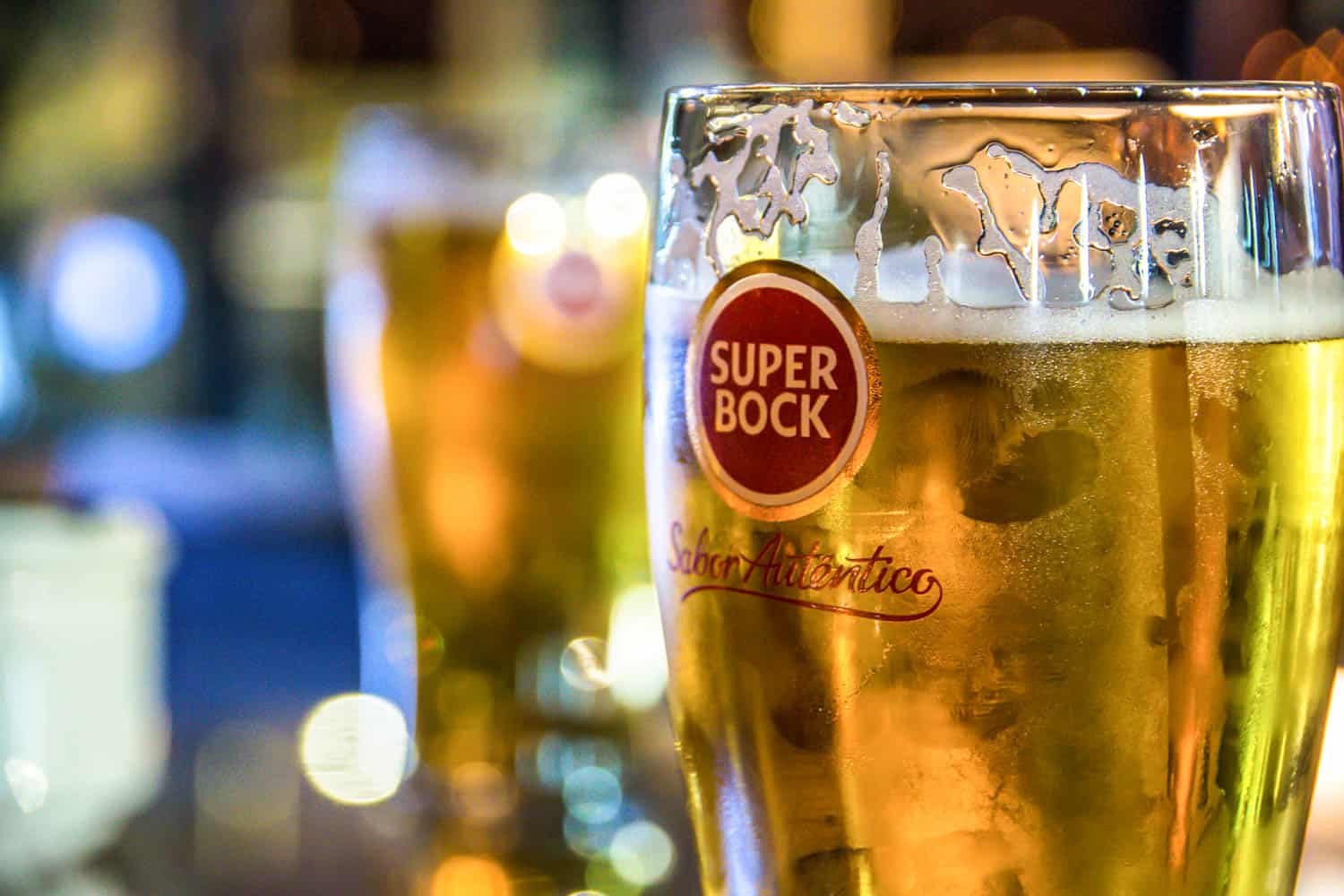
What to Drink in Lisbon
While food in Lisbon is excellent, there are some great drinks to pair these with too.
Coffee shops dot the landscape across the city, for a much needed energy and caffeine boost to keep exploring the sights of the city.
Lisboans like coffee dark and strong, very similar to Cuban coffee. Although if you prefer it a little weaker, the Carioca is not quite as potent.
Vinho Verde Wine
For a lighter afternoon drink, the two main beer brand in Lisbon are SuperBock and Sagres.
These are both lighter lager style beers, although you will also find various other smaller brands worth trying too.
Head over to Cervejaria Ramiro a popular spot to try Lisbon food and beer.
The other light drink worth trying here is sangria. Here it is a fruity mix of red wine with lemonade and fruit juices.
There are also several options for those looking for something a little more potent. Ginjinha is a sweet cherry liquor. Amendoa amarga is made with almonds.
Finally, Portugal is famous for its port wine, and there are several different varieties to be found in Lisbon.
Rose Sangria
Although most commonly served as an aperitif or with dessert, port wine can be enjoyed throughout the day in Lisbon.
I hope this food guide gave you some inspiration for your own food tour of Lisbon. Is there any food in Lisbon that I missed? Let me know in the comments below!

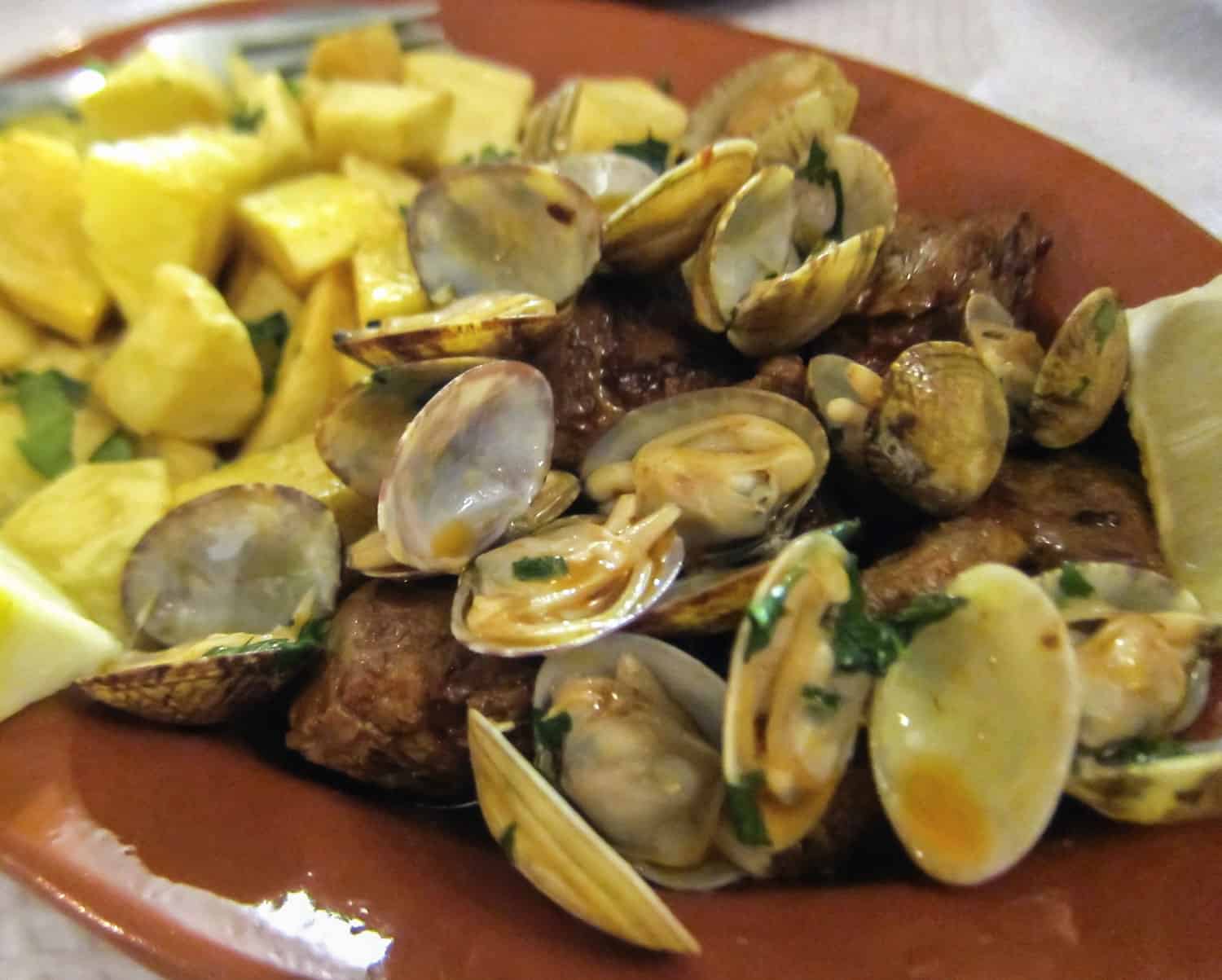
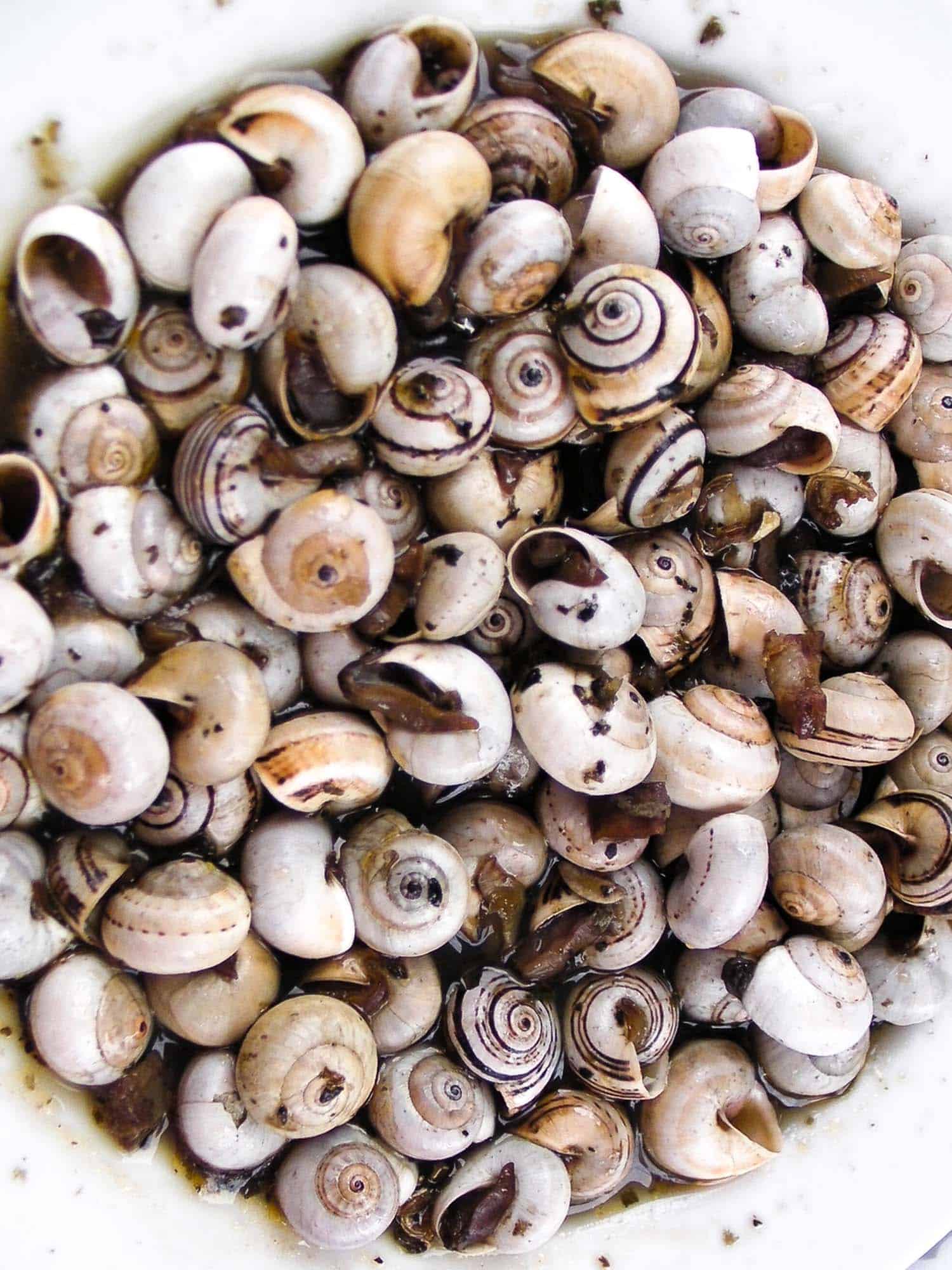
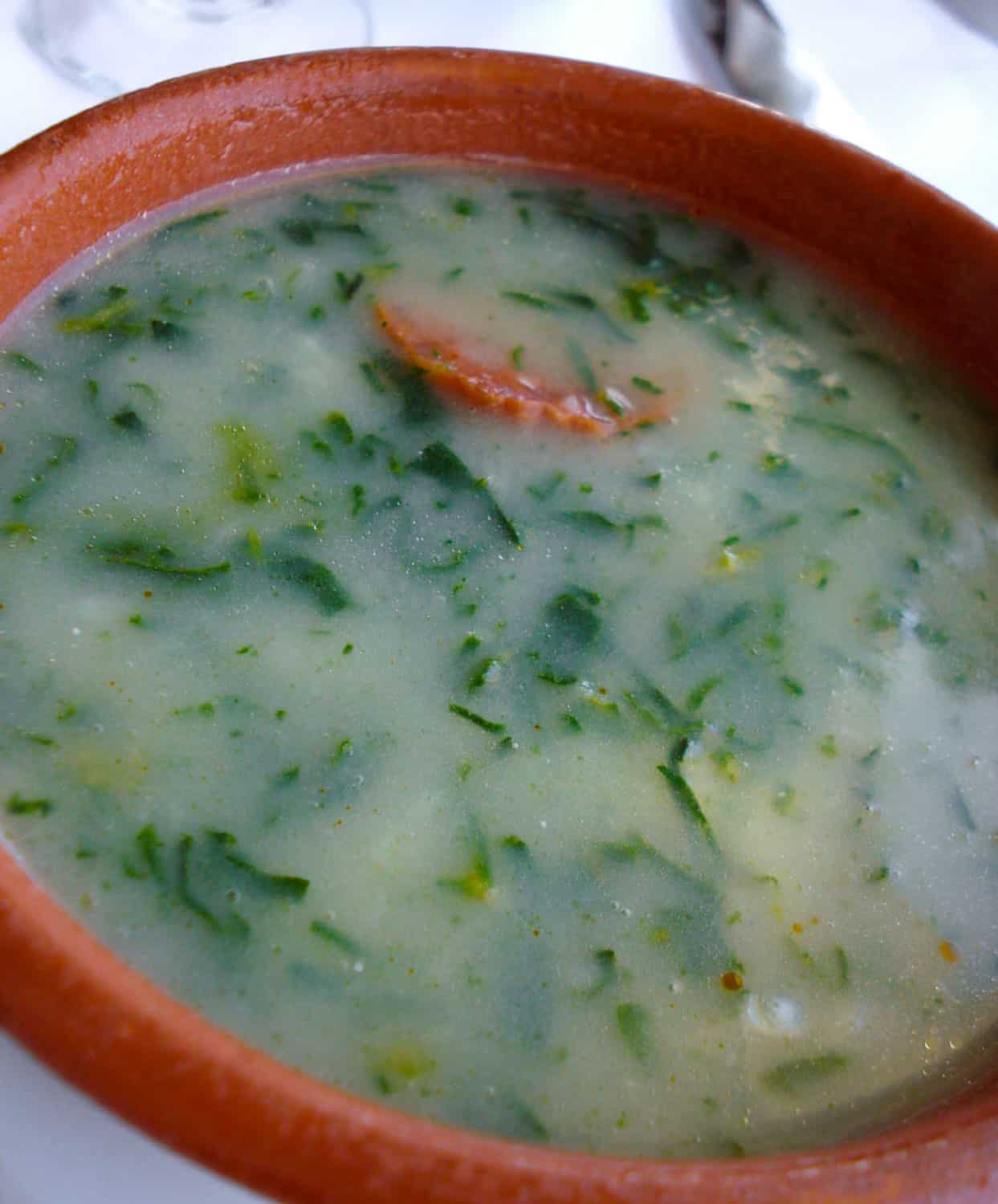
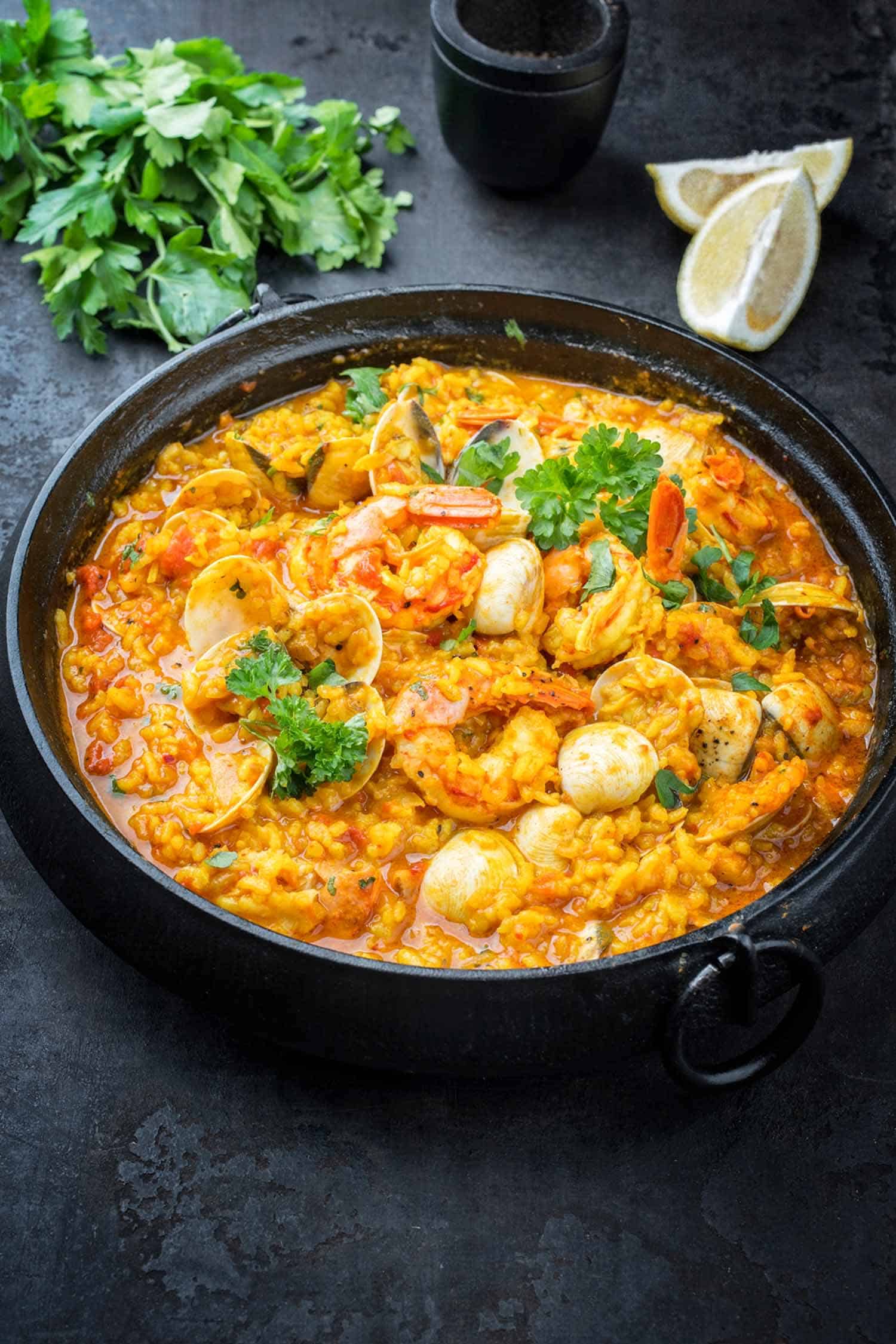

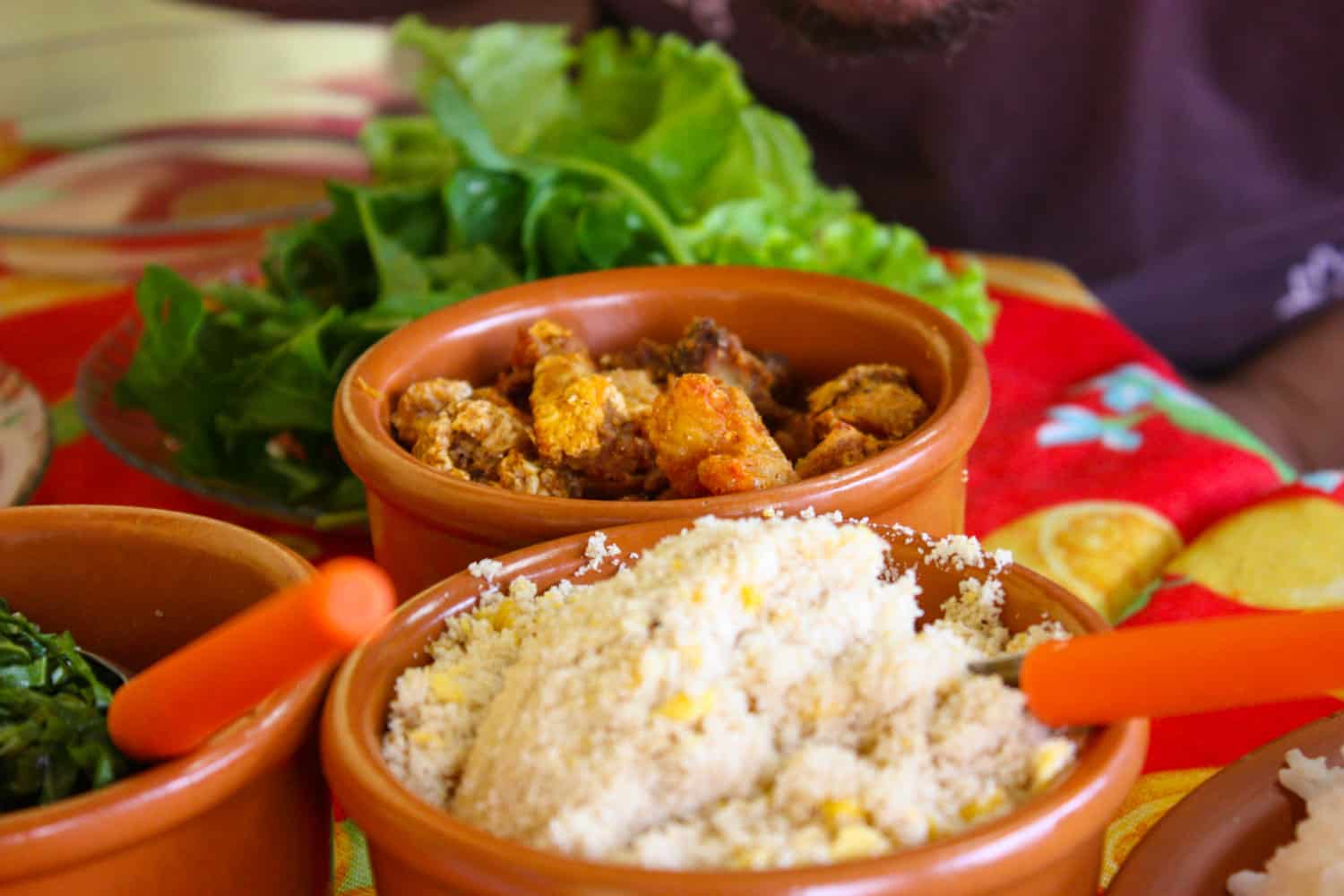

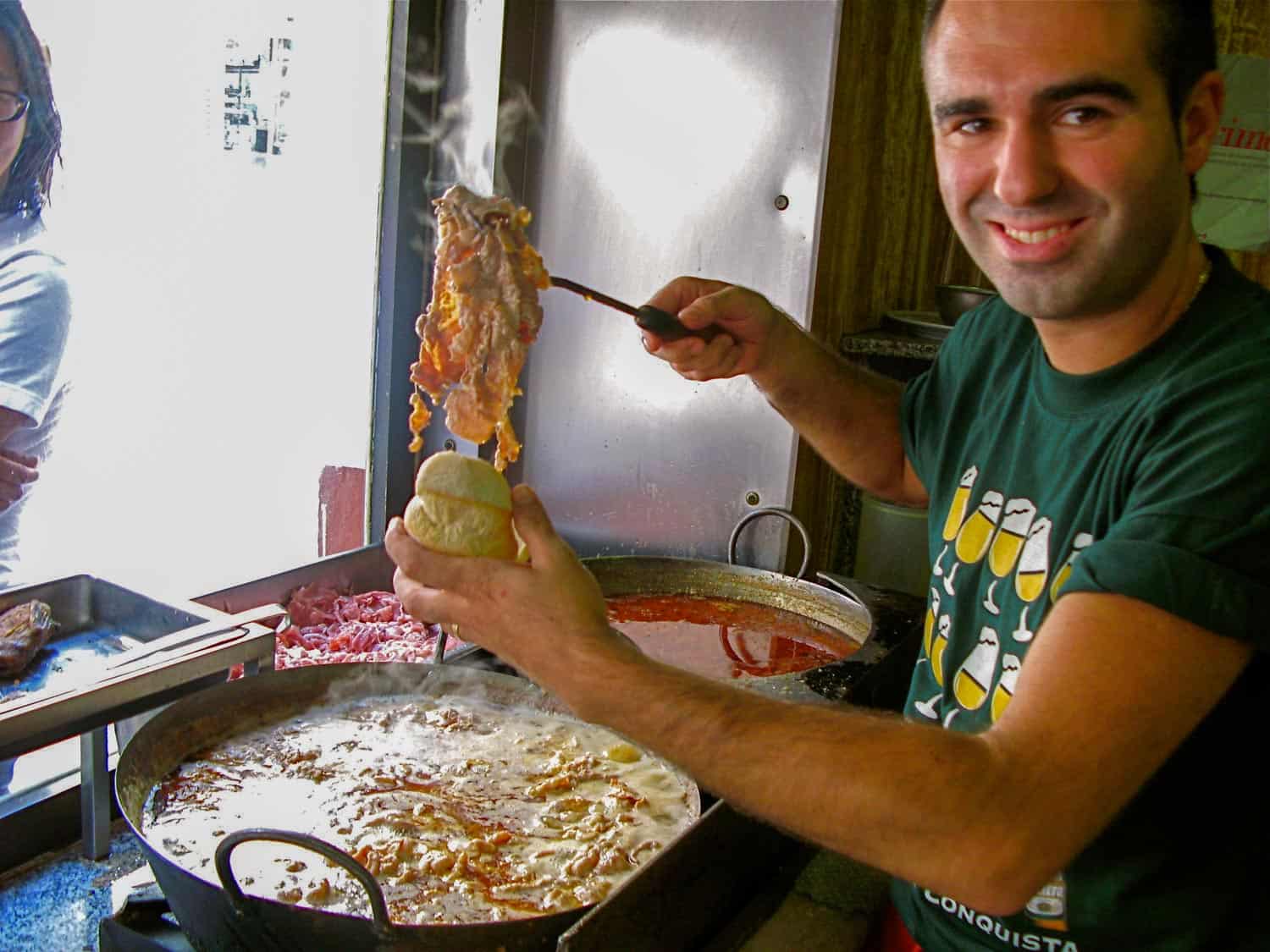
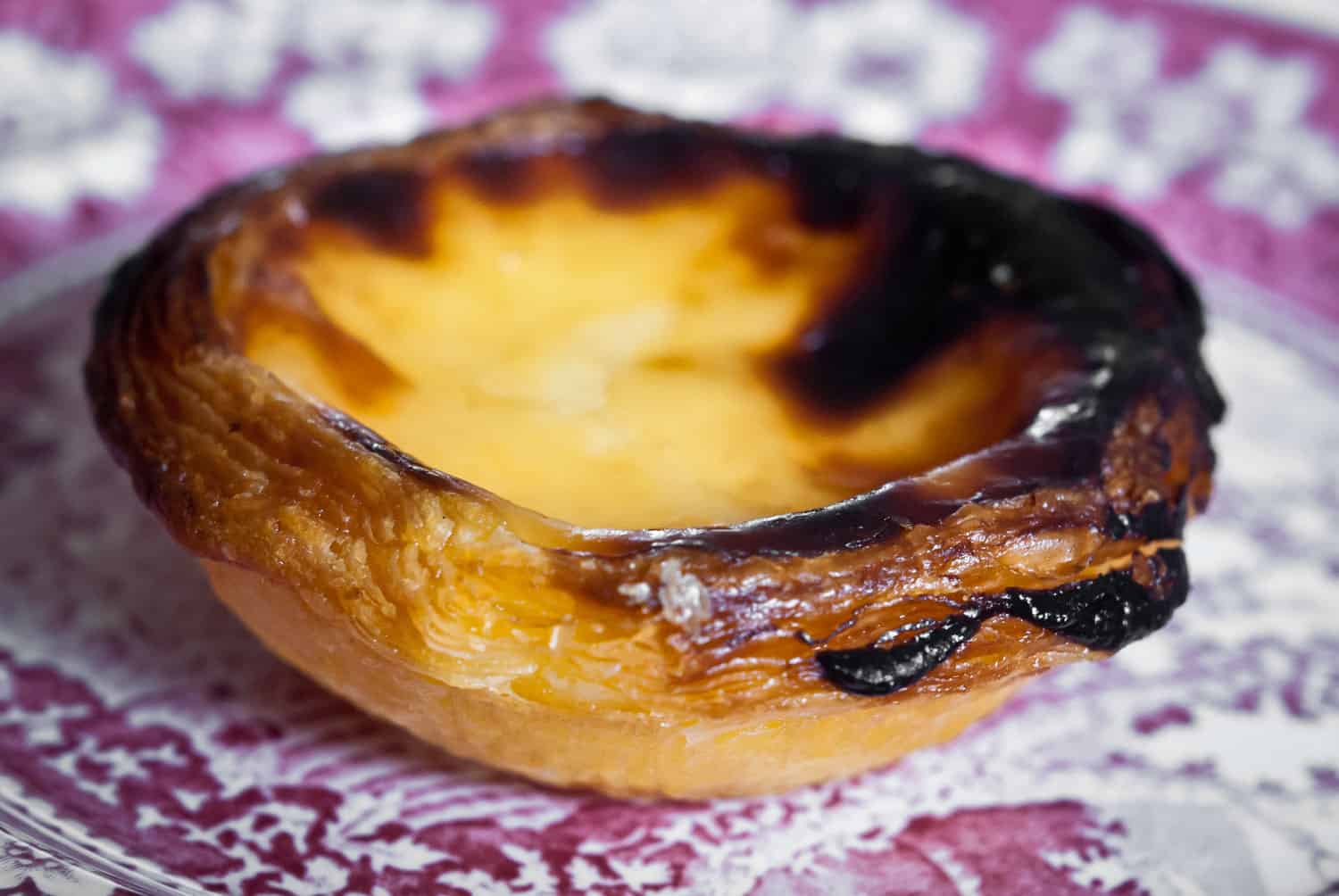
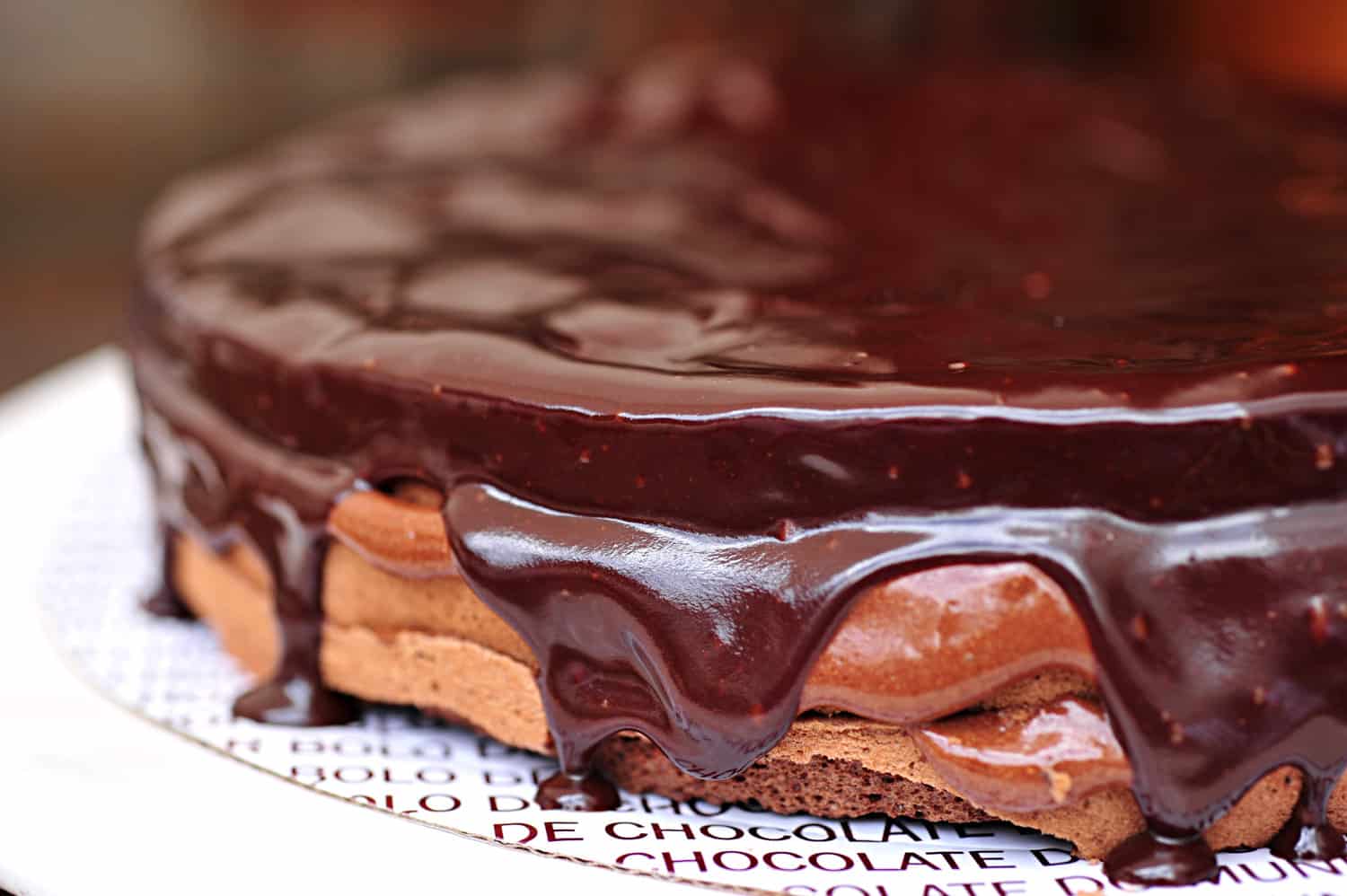
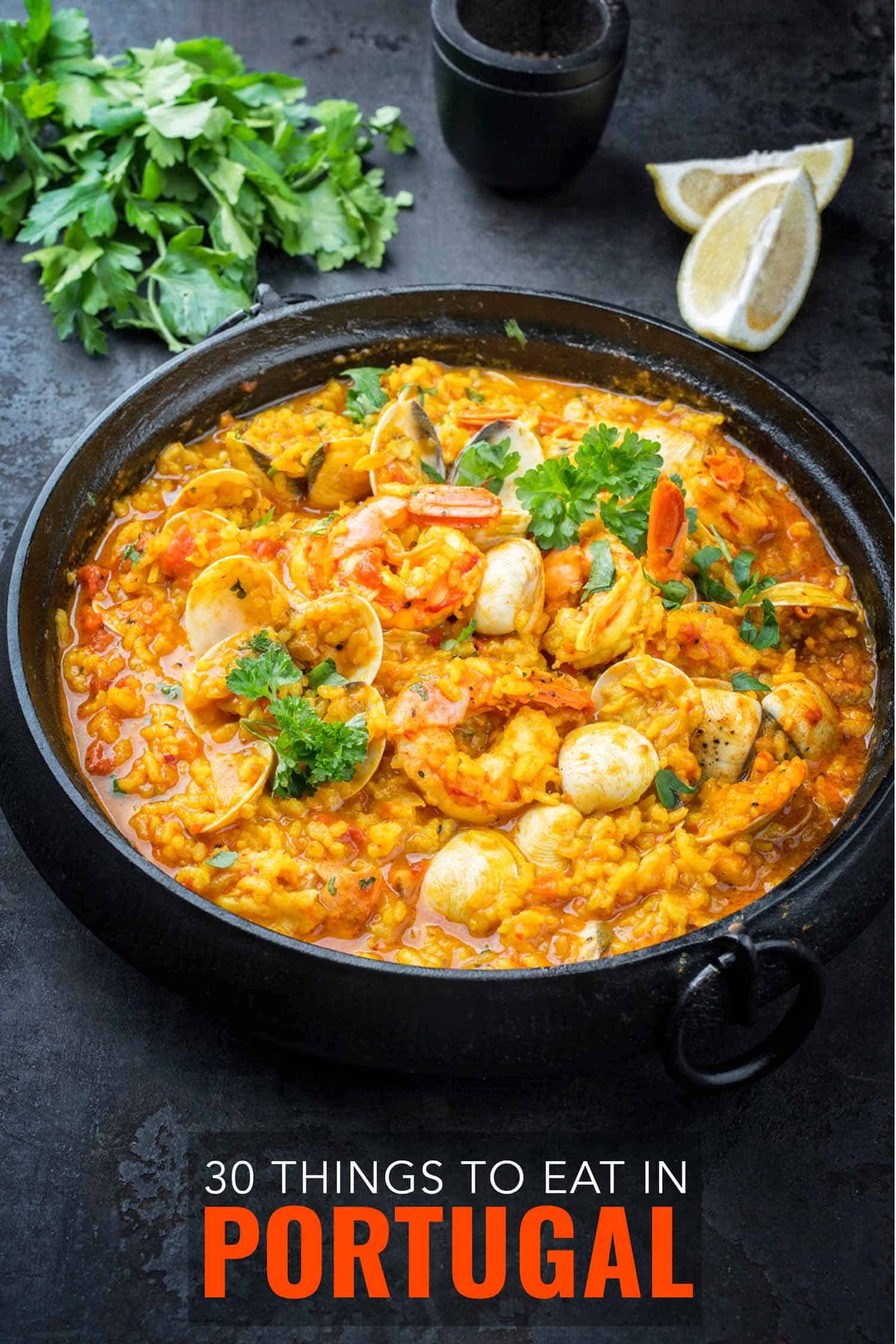
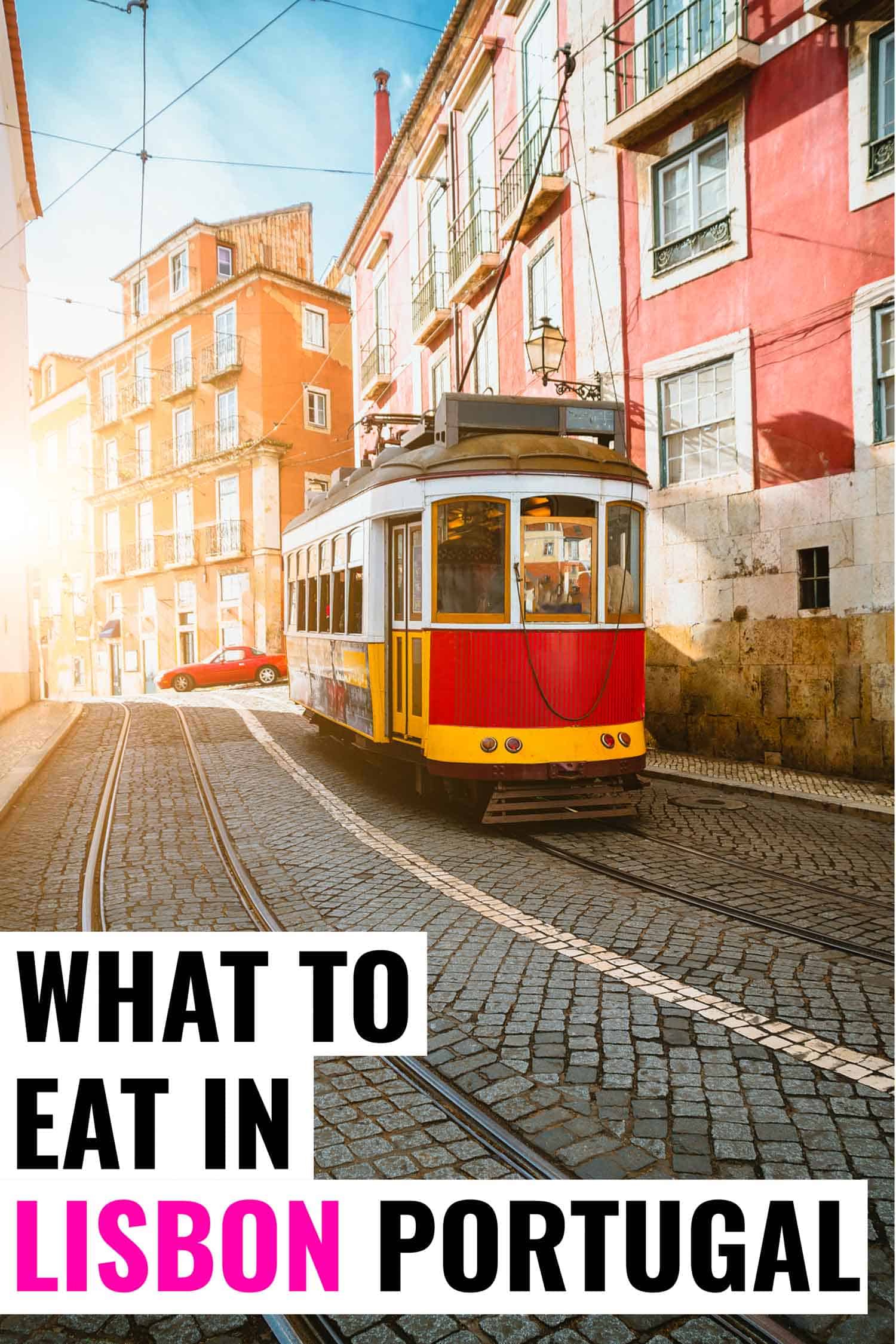
Ah, the Caracois! How delicious! Just by reading this word -let alone remembering the taste- gave me instant wanderlust!
Thanks for the kind words, it is an amazing dish.